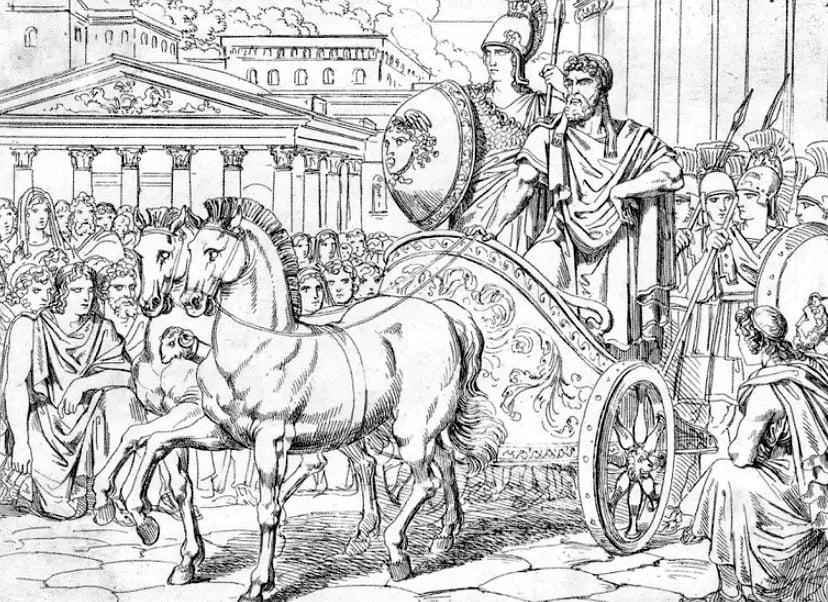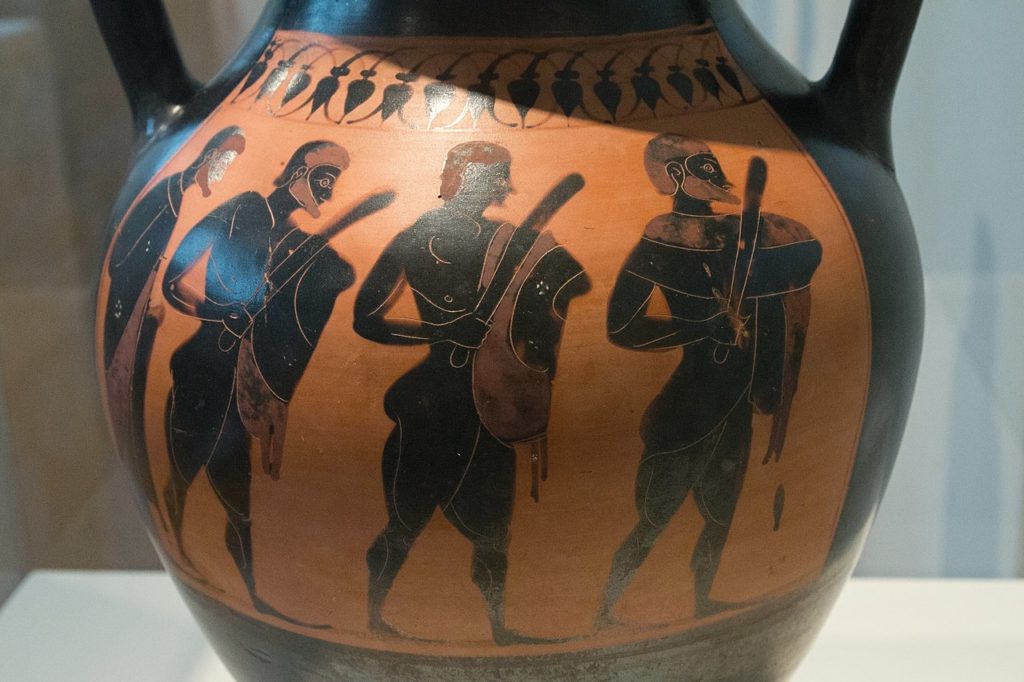
Pisistratus was an ancient Greek statesman who ruled Athens three times as a tyrant. However, his reforms laid the foundations for the city’s later supremacy in Greece.
Born around 600 BC, he came to power with a coup in 561 BC and ruled Athens as a tyrant two more times. This was from 559 to 556 BC and again in 546 until his death in 528 BC. However, he was very popular with Athenians.
His defense of the lower class of Athens is an early example of populism. While in power, he confronted the aristocracy and significantly reduced their privileges, confiscating their estates and giving them to the poor.
He also funded many religious and artistic programs in order to improve the economy and distribute wealth more equally among Athenians.
Pisistratus’ legacy is the unification of the Attica region lands, the organization of the Panathenaic Games, the first attempt to produce a definitive edition of Homer’s epics, which until then were hand-written copies available only to the rich.
The Athenian ruler promoted the cults of Athena and Dionysus and began the construction of the temple to Athena on the Acropolis. He also promoted a number of other public works, including the Lyceum, temples to Apollo and Zeus, and the Fountain of the Nine Springs.
Furthermore, he supported literature, the arts, and the city’s Dionysia festival flourished during his time. Athenian coinage was introduced by about 550 BC and may reflect a policy of his, though there is no certain reference in contemporary documents as to such.
Ancient Greek Tyrant Pisistratus, Relative of Solon
Pisistratus, was the son of a philosopher and teacher named Hippocrates (unrelated to the physician). According to Plutarch, his mother was a cousin of the mother of Solon, the great Athenian lawmaker and statesman, who was considered one of the seven wise men of ancient Greece.
He became known as an Athenian general who captured the port of Nisaea in Megara in approximately 565 BC. This victory opened up the unofficial trade blockage that had been contributing to food shortages in Athens during the previous decades.
During that time, Athenians were divided into two factions, namely the Pediakoi, which referred to the population that resided on the plains and produced grain, led by Lycurgus, and the Paralioi, or the population living along the coast that was involved in the fish trade. They were led by Megacles.
Then there were the Hyperakrioi, who were not previously represented by the first two factions and dwelled primarily in the hills. They were the poorest of the Athenian population. Peisistratus organized them into a third faction. This party grossly outnumbered the other two parties combined.
When Solon left Athens in 560 BC, Peisistratus, as leader of the Hyperakrioi seized the Acropolis with a group of bodyguards and became the tyrant of Athens.
In Plutarch’s account, Solon accused Athenians of stupidity and cowardice for allowing this to happen. However, Peisistratus’ rule did not last, as he was driven out by Lycurgus, Megacles, and others within the year.

Pisistratus in Power
The ancient Greek tyrant, Pisistratus, returned in 559 BC with the help of Megacles, who no longer cooperated with Lycurgus against Pisistratus. Megacles had allied with Peisistratus on the condition that he marry Megacles’ daughter.
The Athenians were persuaded by Megacles that goddess Athena was bringing Pisistratus home. Pisistratus returned from exile in a carriage accompanied by a woman disguised as Athena.
Later, Megacles was angered by the fact that Pisistratus refused to have children with his daughter. The tyrant was exiled once again by Lycurgus and Megacles in 556 BC.
Pisistratus went to Euboea and lived there for almost ten years. In Euboea, he accumulated wealth through mining. With his wealth, he formed a considerable bodyguard force.
In 546 BC, he landed in Marathon with his bodyguards and forces of Lygdamis of Naxos. Pisistratus was riding on a chariot with a tall young woman dressed as the goddess Athena in order to deceive Athenians into believing that his return was sanctioned by the gods.
In exchange for his help, Pisistratus rewarded Lygdamis by proclaiming him tyrant of Naxos.
Upon his return, the Athenians accepted him favorably. Pisistratus consolidated his power by making new land laws for rural citizens, getting them to align with him. He also kept a large force of mercenaries and took hostages from aristocratic families so they would not act against him.
He maintained the democratic forms introduced by Solon but ensured that family members held the highest offices.
Contribution to the Greatness of Athens
The Athenian tyrant’s policies appear to have been designed to increase the unity and majesty of the Athenian city-state. He brought the great shrine of Demeter at Eleusis under state control and constructed the first major Hall of the Mysteries (Telesterion) for the annual rites of initiation into the cult.
Athena now became the main deity to be revered by all Athenian citizens. Pisistratus constructed an entry gate (later destroyed and replaced by Pericles’ Propylaea) on the Acropolis. Many sculptured fragments of limestone buildings from his era have been found on the Acropolis.
Festivals and literature also flourished in his time. The tyrant enhanced the glory of the Panathenaea, a yearly festival to Athena, through athletic contests and prizes for bards who recited the Homeric epics every four years.
Pisistratus put the cult of Dionysus under state sponsorship. Prizes were awarded at the yearly Dionysia festival for the singing of dithyrambs and, from 534, for the performance of tragedies.
Poets such as Anacreon lived at the court of Pisistratus and his sons, who also encouraged the collection of oracles and supported the famous soothsayer Onomacritus.
In regards to the city, Pisistratus improved its water supply by building an aqueduct that fed the Enneakrounos fountain on the edge of the agora. He also beautified and systematized the marketplace itself.
Pisistratus gave loans to small farmers for tools and equipment. He reduced aristocratic control over rural Attica through government regulation and instituted a system of traveling judges to provide state trials of rural cases on the spot. He himself made inspection tours.
The tyrant also generated revenue from the silver mines of Laurium, making them state property, and dues were exacted from the growing trade at Athenian harbors. He instituted a tax, likely of five percent, on agricultural production.
Athenian industry and commerce expanded tremendously in the latter half of the sixth century. The main contribution of Pisistratus was probably the guarantee of internal tranquility.
The religious and patriotic unification of Athens by Pisistratus saw the city-state making great progress. As Aristotle noted, it became a common saying that the tyranny of Pisistratus had been the age of Cronus, the golden age.
See all the latest news from Greece and the world at Greekreporter.com. Contact our newsroom to report an update or send your story, photos and videos. Follow GR on Google News and subscribe here to our daily email!



